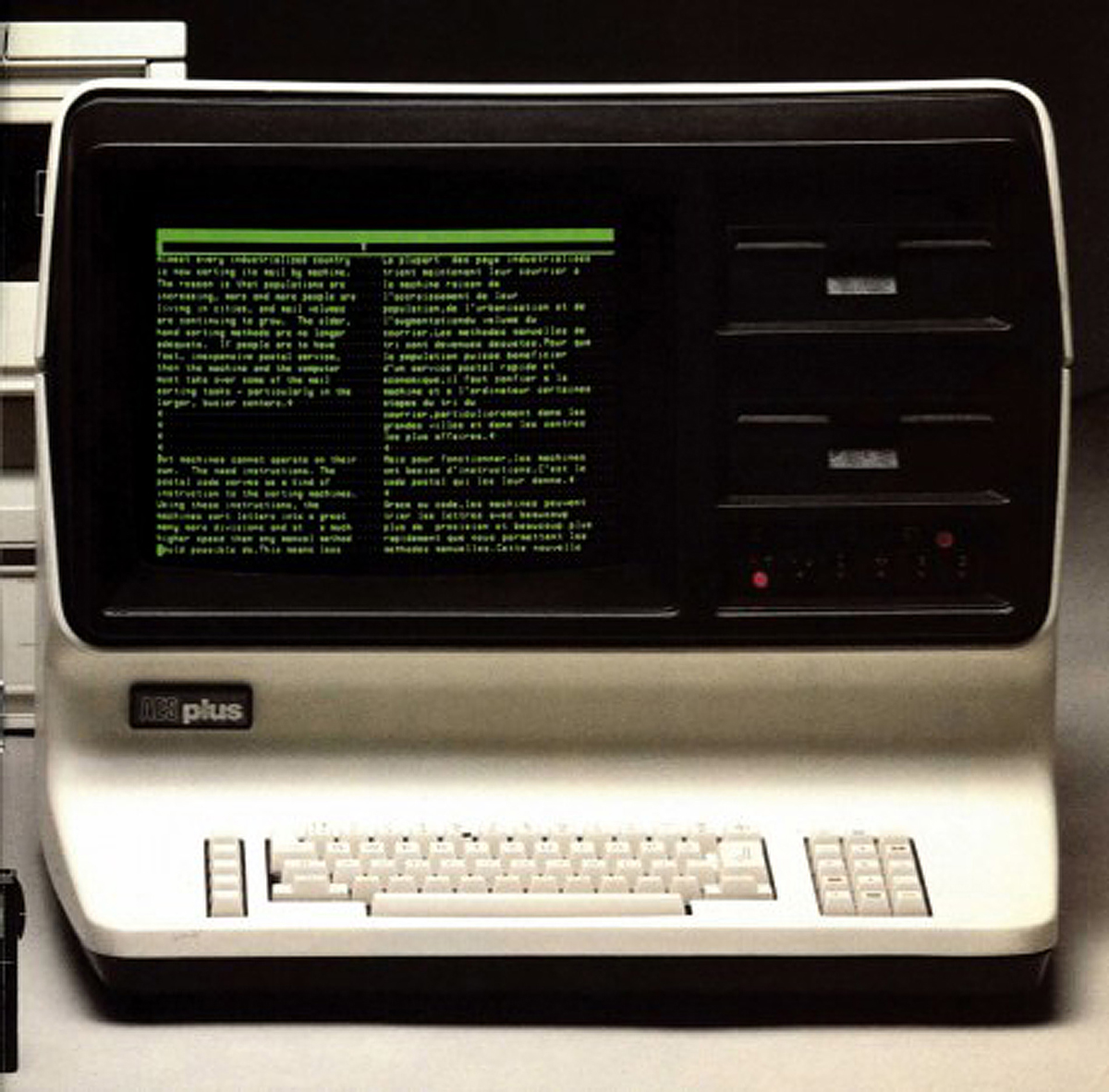When Assiniboine brought word processing to the RCN
By Lookout Production on May 22, 2022 with Comments 0
Don Sheridan, with CPO1(Ret’d) Bruce Cake, and CPO1 (Ret’d) John Arsenault
Contributors
—
In this article we celebrate an innovation in the Royal Canadian Navy that started specifically in HMCS Assiniboine – when the ship’s office trialed a Canadian word processing system that was, at the time, a world leader in this new technology.
Flashback to 1979
When CPO2 Bruce Cake became the Chief Clerk of HMCS Assiniboine, he started with one manual typewriter, then an electric typewriter, and later a Gestetner to produce copies of routine orders.
Operating a Gestetner involved typing on a skin – foolscap-sized, thin membrane. The skin was placed on a drum and ink seeped into cuts made by typed characters. There were no erasers, so fixing a mistake meant using correction fluid or starting over.
Assiniboine was in refit when Chief Cake replaced the typewriters with modern electric typewriters, and the Gestetner with a Xerox photocopier. Although the photocopier seemed like a good idea, it broke down on the first day at sea because the top of the machine moved back and forth to produce a single copy. It was unable to function for long in a warship at sea. However, a more impressive innovation was to come
The AES word processors were revolutionizing office management. They allowed users to create, store, and revise text electronically before printing. They had a monitor to enter, edit, and format the text, making the AES known as the world’s first programmable video screen word processor.
CPO2 Cake first learned of the AES during Assiniboine’s Joint Naval Force Atlantic deployment in Chatham, England, from a demonstration at an office supplies shop. He asked if he could input a paragraph on the device, and was able to immediately see the text on a monitor. It was a “eureka” moment for him. When he returned to the ship with the sales literature and his first-hand experience, he briefed the Executive Officer, Lietenant-Commander K.C. Beardmore. It was agreed he could pursue the idea of ship-board word processing when they returned to Halifax. The goal was to have one of the word processing companies set up a system on the ship.
Back in home port, CPO2 Cake learned the federal government had a significant investment in AES. He persuaded the company to supply the hardware, software, and necessary training for him and his staff, with worldwide support, at no cost.
He took on Ordinary Seaman John Arsenault, Junior Clerk of the Ship’s Office, to help with the project. Together, they built a very productive relationship with the local representative.
The AES system had to be in place before the Assiniboine departed for Exercise Teamwork 80. AES sent spares ahead to Rotterdam so that when the fleet arrived, Assiniboine could access anything that was needed.
A Department of National Defence agency responsible for communications security had to determine if the AES system could be detected and if its input could be decrypted. The agency checked the AES for spurious electromagnetic radiation. While other NATO ships were flashing-up their electronic systems, only an antenna next to the AES in the ship’s office could pick up a signal.
On arrival in Rotterdam, the AES technician checked for faults while various clerks from NATO ships visited to admire the AES system – the first one they had seen. Especially keen were those from the U.S. Navy.
The word processor was used to complete forms, track leave, and develop a program to track sea pay. The program for sea pay was used monthly and would automatically add an additional month to an individual’s sea time at the push of a button. It would then identify any individual that was eligible for a sea pay increase.
Ordinary Seaman Arsenault, who became Leading Seaman at the time, taught the first course to the navy on the AES word processor between Nov. 21 and Dec. 29, 1984, at the request of the Commander Canadian Fleet. Both LS Arsenault and CPO2 Cake worked out of the AES building near Scotia Square for this period of time.
“We showed others how they could utilize our programs and how to develop their own programs. By this time, we had built programs that the AES personnel did not think possible – until I showed them that it could be done, and the programs would in fact work,” recalls Arsenault, who retired from the navy as a CPO1 and Client Services Senior Chief. “Although I saw technology advance dramatically, in many cases it caused a heavier workload. Everyone seemed to want to put their special wording on things. I think the new technology caused an increase in paper consumption, funny how that happened. Those times were amazing, the technology just seemed to progress so quickly from the time on Assiniboine until I retired, and I am sure it is still moving forward.”
From Assiniboine, Cake was promoted to CPO1, posted to CFB Halifax as a base clerk, and subsequently retired.
“I am grateful to have been in the right place at the right time and to have received the support of my seniors and juniors to get this trial off the ground, or in this case ‘out to sea’,” says Cake.
Filed Under: Top Stories
About the Author:






